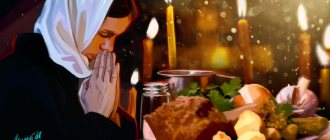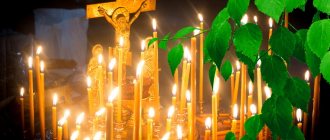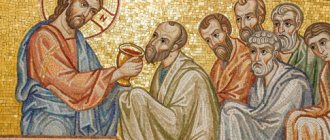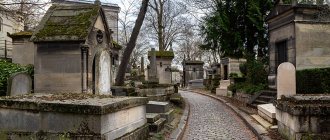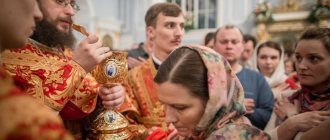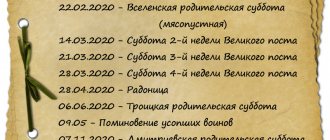When a person enters the temple of God, he immediately feels that he has found himself in some special majestic and at the same time very peaceful environment - in heaven, which, however, is on earth. Everything here carries harmony, deep meaning and great spiritual beauty. Each church paraphernalia and utensils maintains its own order and order. Sacred rites and prayer before the altar are performed according to strict ancient canons. All this is quite logical and understandable, but there is also something that requires careful explanation.
For example, many clergy often face the following question: bow to the ground - how to do it? It is impossible to answer it simply and unambiguously, but it is not that complicated if you study it carefully.
Prostration - how to do it?
It must be said right away that bowing is a symbolic action that has been performed since the most ancient biblical times and expresses great respect to the Creator of everything earthly and heavenly - the Lord God. Therefore, any bows should be done very slowly and with the words of prayer. To find out for yourself how to bow to the ground correctly, you need to decide what kind of bows there are in general. It turns out that there are great ones - bows to the ground, and there are small ones - bows from the waist. And there is also a simple bow of the head.
When bowing to the ground, you must fall on your knees and touch your forehead to the floor. When bowing from the waist, the head is tilted down so that the fingers touch the floor. This is how Solomon prayed at the consecration of the Temple of the Lord, Daniel when he was in captivity in Babylon, and other righteous people of the Old Testament. This custom was sanctified by Christ Himself and entered into the practice of the Holy Church of Christ.
Varieties of bows
St. John of Kronstadt called bowing the head a tool that helps to eradicate the pride that is lodged deep in the soul. The Typicon prescribes two types of veneration:
- Small, or waist. This involves bending the body at the waist while lowering the head. As a rule, it is customary to place them during home or congregational prayers.
- Great, or earthly. They represent kneeling, placing your forehead on the floor. For example, during fasting they are placed three times while reading a prayer of repentance.
Kneeling
The largest part of genuflection is done during Lent. According to the explanation of St. Basil the Great, kneeling symbolizes the fall of a person in sin, and then the uprising - his forgiveness by the great mercy of the Lord.
And again the question arises: 40 prostrations to the ground - how to do it correctly? Bows are made at any time, except for special days, we will talk about them below. The rest of the time there is no need to be lazy, but it is better to voluntarily plunge yourself into prostration, which means your own fall into the abyss of repentance in the hope that God will accept and bless these modest labors.
Nothing depends on the number of bows and fasting if the heart and soul are not cleansed of bad thoughts and change for the better. And if a person sincerely repents even a little, then the loving Father will certainly extend His holy right hand to him.
Answers on questions
Body position during prayer. Postures and gestures of the person praying
The Importance of Participating the Body in Prayer
Work in prayer
How to read prayers at home - standing or sitting?
Kneeling at the liturgy in Orthodoxy
Bowing during prayer. What does prostration and bow to the waist mean in Orthodoxy?
Prayer gestures
Photobank Lori
Man is a spiritual and physical being at the same time, therefore both spirit and body participate in prayer.
Body prayer is the postures and movements that accompany the reading of the text of the prayer:
- prayer pose
- kneeling
- raising hands
- bows
- sign of the cross
In Orthodoxy there is a charter on how to do it correctly and at what moments.
The Importance of Participating the Body in Prayer
The posture in which one prays is important for the correctness of prayer . Not because God will punish for inaccuracy, but because the position of the body affects the state of the soul and determines the emotional mood .
A relaxed posture leads to mental relaxation and absent-mindedness. Prayer without the participation of the body is incomplete and not intense enough. A body that is at rest distracts the worshiper’s attention from prayer and provokes a desire to stretch and move around.
Work in prayer
Prayer does not happen without labor for the body. By forcing the body to make efforts (standing, bowing, kneeling), a Christian curbs his flesh and does not give freedom to passions.
The Holy Fathers considered difficult prayer, which tires the body, the first step to true prayer.
Orthodox Christians accompany prayer with the sign of the cross and bows .
The prone position is practiced only once a year - during the reading of prayers at Pentecost Vespers.
How to read prayers at home - standing or sitting?
, it is customary to read prayers both in church and at home . If it is difficult to stand (for example, if you are very tired or ill), then prayer while sitting is allowed. Even if you are lying at home and cannot get out of bed and sit down, this is not an obstacle to prayer
Prayer while standing
During prayer, you need to remember that you are standing before God. There is no place for frivolity in this situation. You need to stand in prayer
- directly,
- reverently
- without shifting from foot to foot,
- without making fussy movements.
During worship in the temple, you are allowed to sit at some points. This is possible during the reading of kathismas (passages from the Psalter) and proverbs (passages from the Old Testament) at the evening service.
It is not customary to sit during the Liturgy, but an exception is made for people who physically cannot stand for a long time.
However, during the service everyone must stand during the
- Gospel readings
- in the interval between the singing of the Creed and the Lord's Prayer
- during the priest’s cries of “Blessed is the kingdom...”
Prayer on your knees at home
Kneeling prayer is performed at home, according to the special zeal of the believer. She expresses special humility and respect.
You can pray on your knees at home at any time,
- a person who has tasted the Body of Christ is sanctified; he should not make signs of repentance and thereby humiliate the Holy Gifts he has received.
Kneeling at the liturgy in Orthodoxy
In an Orthodox church, prolonged kneeling during worship is performed only
- on the feast of Pentecost,
- at Great Vespers, which is served immediately after the Liturgy.
At this time, the priest reads several long prayers and himself, along with all the people, kneels.
At other times, prostrations may be performed at church services.
In Orthodox churches in Belarus, Ukraine and Lithuania, under the influence of the Catholic Church, a local tradition of kneeling prayers arose. In essence, these are prostrations to the ground, for which believers kneel.
Bowing during prayer. What does prostration and bow to the waist mean in Orthodoxy?
During prayers, it is customary to bow to the ground and bow from the waist. This is a sign of reverence for God .
Usually the bow is made after the sign of the cross when pronouncing particularly significant, important words of prayer.
How to bow to the ground correctly?
Prostration is a bow during which the believer kneels, touches the floor with his forehead and immediately rises .
In the Orthodox Church, prostrations should be made by kissing shrines (icons, relics, sacred relics):
- two prostrations before applying and
- one prostration after application.
On some days, the church cancels prostrations because they do not correspond to the meaning of the revered event. In these cases, bows to the ground are replaced by bows .
During the Sunday Liturgy in Orthodoxy, prostrations to the ground, according to the rule of Basil the Great, should not be made. Sometimes this rule is broken, and at the cry of the choir “One is Holy, One is Lord Jesus Christ...” one bow is made.
How to properly bow from the waist?
A bow from the waist is a bow from the waist when the believer strives to reach his hand to the floor without bending his knees .
- Usually done immediately after the sign of the cross
- A bow from the waist must be performed before entering the temple .
Prayer gestures
The main prayer gesture in Orthodoxy, as in all Christianity, is the sign of the cross .
In addition to this, in church services, priests use the gesture of blessing .
About the sign of the cross in Orthodoxy: power, meaning and essence
Since apostolic times, it has been customary in the Church to sign oneself with the sign of the cross, or, as they also say, to be baptized .
The sign of the cross is a reminder of the Cross on which the Lord Jesus Christ was crucified. By placing such a symbolic cross on ourselves, we invoke the grace of the Holy Spirit.
How to make the sign of the cross?
The sign of the cross is performed slowly and always with the right hand .
First, fold your fingers :
- the thumb, index and middle fingers are folded together,
- the ring and little fingers remain bent.
folded in this way, you need to touch
- first forehead, sanctifying your thoughts,
- then the belly - for the sanctification of the heart and feelings,
- then the right shoulder
- and, finally, the left shoulder - to sanctify bodily health and actions.
This should be followed by a bow or bow .
Finger formations: two-fingered and three-fingered in Orthodoxy
For the sign of the cross in modern Orthodoxy, three fingers are used .
For this gesture
- put the thumb, index and middle fingers of the right hand together,
- The little and ring fingers are pressed against the palm.
The folded three fingers symbolize the Holy Trinity - the Father, the Son and the Holy Spirit, the ring and little fingers remind of the dual nature of our Lord Jesus Christ - divine and human.
In ancient times, they used two fingers: the sign of the cross was made with the index and middle fingers extended, while the thumb, ring and little fingers were folded together.
The index and middle fingers symbolized the two natures of Christ, the thumb, ring and little fingers - the three Persons of the Holy Trinity.
After the reforms of Patriarch Nikon, three fingers began to be used in Orthodoxy. Because of this, an Old Believer split occurred. Only in the 19th century did the Church again allow baptism with two fingers and the use of other elements of the old rite, and some Old Believers were able to reunite with the Church. Their communities are called Edinoverie.
Nominal finger addition
There is another prayer gesture - the making of names.
It is used by the priest to bless the faithful during and outside of the service.
The name sign means the initials of the name of our Lord Jesus Christ ICXC:
- index finger extended
- the middle one is slightly bent, forming the letter C,
- the thumb and ring fingers are crossed with the letter X,
- The little finger is also bent in the shape of the letter C.
Source: //rublev.com/molitvoslov/otvety-na-voprosy/polozhenie-tela-pri-molitve-pozy-i-zhesty-molyashegosya
The experience of Bishop Afanasy Sakharov
It is not always possible to find the correct answer to how to prostrate in Orthodoxy. But let’s try to turn to the well-known zealot of the Church Rule, confessor Athanasius (Sakharov).
First of all, let's figure out when you can't bow to the ground and when you can. During worship, prostrations to the ground, like bow bows in principle, are not done at will. They are made on weekdays and on fasting days of repentance. On Sundays and, of course, on great holidays, according to the decree of the Holy Fathers, they are canceled.
During the period of Easter and before Trinity, as well as from Christmas and before Epiphany, bowing to the ground is also not required. In the 90th rule of the VI Ecumenical Council it is written that on Sundays one should not bend the knee for the honor of Christ’s Resurrection. But small bows must be done at certain moments in accordance with the meaning of the prayers.
Legacy of the Golden Horde
The oldest form of bowing was to fall prostrate, facing the ground. Without dividing the power of earthly and heavenly, ancient people prostrated themselves not only during prayer, but also before state rulers, thereby symbolically recognizing the sacredness of their power. The tradition of prostrating came to Rus' with the Tatar-Mongol invasion. Having borrowed this tradition from China, the Tatar khans forced the Russian princes, during an official reception, to observe all the ceremonies accepted by the Horde, which included the obligatory prostration and kissing of the carpet in front of the khan’s throne. Established in Russian court culture, prostration was performed in front of the Russian Tsar during official events until the 16th century.
Bows and bows to the ground
So, at any worship service it is necessary:
- Three small bows while reading and singing: “Holy God,” “Come, let us worship,” “Blessed be the name of the Lord,” three times “Hallelujah.”
- Three small bows to a verse from Psalm 119.
- A small bow and the sign of the cross at all litanies (exclamations of the priest), while singing “Lord, have mercy” and “Give, Lord.”
- A small bow during prayers and stichera, only after the words “let us fall,” “we pray,” “we bow.”
- A small bow always before and after reading the Gospel “Glory to Thee, Lord.”
- A small bow when reading the akathist, on each kontakion and ikos, on the 13th kontakion, read three times - a bow from the waist or a bow to the ground, depending on the day.
- A small bow at the end of the service after the chant “Honest Cherub” and the words of the prayer “Bless the Name of the Lord, Father.”
- A small bow with the consecration of oneself with the sign of the cross after the words of the priest: “Peace to all” and the response of the choir: “And to your spirit.”
- A small bow with the obligatory sign of the cross when overshadowed by the Gospel, Cross or icon.
- A small bow without the sign of the cross when blessing with the hand of a priest, overshadowing with candles or during censing. Only when censing on Easter, to the greeting “Christ is Risen,” when crossing themselves, they answer: “Truly He is Risen.”
- A small bow without making the sign of the cross on holidays with the blessing of the priest with the hand and a bow from the waist with making the sign of the cross when blessing with the cross.
Lent
During the days of the Great 40-day Lent, which is before Easter, some of the bows are replaced by bows to the ground and their number increases.
This is a time of repentance, humility, spiritual and physical cleansing, so prayers are complemented by prostrations to the ground.
You need to focus on the following chants and prayers:
- At the Liturgy of the Presanctified Gifts:
- May my prayer be corrected
- Now the Powers of Heaven
- When shouting, the Light of “Christ enlightens everyone”
- At the Great Supper with hymns:
- Holy Lady
- Rejoice to the Virgin Mary
- When reading the prayer of Ephraim the Syrian
- During the final chant “Remember us Lord”
- On the feast of the Holy Trinity, with the exclamation “Pack and pack, kneel”
It is impossible to remember all of them the first time, so you should focus on the behavior of other parishioners. (Just do not confuse parishioners with nuns; nuns have their own rules and rules for bowing, which often do not coincide with the bowing of the laity).
Church Charter
Bows at services (vespers, matins, all-night vigil):
- Prostrations to the ground stop after the prayer “Grant, O Lord,” at vespers of a holiday or Sunday all-night vigil until vespers the next day.
- A small bow is made after each magnification at Matins, during the singing of the magnification.
- Small bow while singing “We praise, bless, bow and extol Thee.”
- A small or prostration while singing “Most Honest Cherub” (depending on the day), after the exclamation “Theotokos and Mother of Light.”
- Prostration at non-holiday matins after the liturgical prayer “It is worthy to eat.”
Secular tradition
If kneeling was performed by Russians only on especially solemn occasions, during great national misfortune or when kissing highly revered miraculous icons, then bowing from the waist in pre-revolutionary Russia was used not only during prayer, but was also the main form of polite greeting in society. They honored parents with a bow from the waist and expressed respect to society; commoners also bowed “to the waist” to representatives of the clergy, nobles and the king. In cases of special gratitude or veneration, a heartfelt bow was also used - during a bow from the waist, the right hand was pressed to the heart.
Among the nobles, a bow from the waist was accepted only when honoring the highest clergy and members of the royal family, and when greeting each other, they limited themselves to a slight bow of the head. Also, a penitential bow was accepted by the nobles before execution - thereby they not only asked for forgiveness from the people, but also signified their purity and innocence.
Special rules for bowing
So, we look at what prostration is. How to do it correctly? It is worth considering that sister nuns may be present at the services. Many parishioners, not knowing the rules, begin to imitate them and bow down just like them. Or, on the contrary, they look at them and feel embarrassed.
The whole point is that the monks obey their special charter, and the parishioners need to adhere to the charter of the Holy Fathers, intended for the entire Church, so that the whole meaning of worship is gradually revealed and learned.
About bowing during Divine services
About bowing at every divine service*
The following signs of the cross without bowing, signs of the cross with bows from the waist, and signs of the cross with bows to the ground should be performed:
- at the initial exclamation of each service - 3 bows from the waist;
- on every Trisagion; “Come, let us worship...”; “Alleluia, alleluia, alleluia, glory to Thee, O God,” - 3 bows;
exceptions: a) in the first part of Matins, before the Six Psalms, only the signs of the cross without bows are performed; b) on Alleluia (three times), during kathismas on Sundays and holidays, bows are left;
- on “Our Father...” (at the beginning) - bow;
- at the end of “It is worthy to eat...” (or Zadostoynik) - bow;
- when singing, reading troparions, kontakions, stichera, when the words express worship, one must bow;
- at each petition after all litanies - a bow;
- at each priestly exclamation - a bow.
About bowing during the all-night vigil
At the beginning of the Six Psalms, with the triple “Glory to God in the highest” - 3 signs of the cross (without bowing!);
- in the middle of the six psalms, with three times “Alleluia” - 3 signs of the cross (without bowing!);
- during the polyeleos, during the first and last magnification (which are sung by the clergy in the middle of the temple) - after bowing to the ground;
- to “Glory to Thee, Lord...” before reading the Gospel and after reading - by bowing;
- before kissing the holy Gospel or holy icon - 2 bows;
- after kissing - 1 bow;
- at the canon, with all choruses of all nine songs - bow;
- at “My soul magnifies the Lord”, at the end of each “Most Honest” - a bow;
- on “Glory to You, who showed us the light” before the great doxology - bow;
- after the great doxology on the Trisagion - 3 bows.
About bowing during the Divine Liturgy
After all litanies, at all petitions, there is a bow; exception: on petitions intended for the prayer of the catechumens, such as: “Pray, catechumen, O Lord” and “Catechumenate, bow your heads to the Lord,” you should not bow;
- at all priestly exclamations - by bow;
- after the small entrance, while singing “Come, let us bow” - bow;
- at the exclamation “For Thou art Holy, our God” - the sign of the cross without bowing;
- to “Lord, save the pious” - bow;
- to the deacon’s exclamation “And forever and ever” - bow without the sign of the cross;
- on the Trisagion - 3 bows;
- to “Glory to Thee, Lord...” before reading the Gospel and after it - by bowing;
- at the great entrance, when the priest proclaims “You and all Orthodox Christians” - bow without the sign of the cross;
- at the end of the Cherubic song, while singing “Alleluia” - 3 bows;
- at the beginning of the Creed - the sign of the cross without bowing;
- at the end of the Creed, at “...the tea of the resurrection of the dead...” - bow;
- at the “Grace of the World”, at each exclamation of the deacon or priest - a bow from the waist;
- when shouting “We thank the Lord”, when singing “It is worthy and righteous to worship...” - bow to the ground;
- at the Lord’s words: “Take, eat...” and “Drink everything from it...” - with a deep bow from the waist;
- after the consecration of the Holy Gifts (i.e., before singing “It is Worthy to Eat” or the Zadostoynik) - bow to the ground;
- after “It is worthy to eat” or “Zadostoynik” - bow;
Everyday
There is already an established tradition when, during censing by the rector of the church, parishioners are distracted from the liturgical prayer, begin to move from one side to the other, focusing all their attention on the approaching priest, creating noise, and stand with their backs to the altar, which is unacceptable. During censing, parishioners must step aside and let the priest pass, after which they should quietly stand in place and return to prayer.
If the priest begins to burn people with incense, then it is necessary to bow and return to the service, and not look for the priest with the eyes of the priest during this entire sacred rite. It may seem that this entire list is too complicated and tedious to remember, but it can help every believer get comfortable with the actions of worship.
Is it possible to bow to the ground during the Liturgy?
Liturgy is a special service that consists of three parts: Proskomedia, Liturgy of the Catechumens and Liturgy of the Faithful. In the first two parts, bows are performed according to the rules of the usual services described above, but we will describe the third part - the most important one - in more detail. When and how are small and great bows performed? Let's figure out when to bow to the ground at the Liturgy, and when to bow to the ground.
During the Great Procession, the priest comes out to the pulpit holding the Chalice and Paten in his hands, and the choir at this time sings the “Cherubic Song”:
- Small bow during the end of the first half of the “Cherubimskaya”, at this time the priest is on the pulpit.
- Stand with your head bowed during the commemoration of priests.
- Three small bows with three times “Hallelujah.”
- A great bow every day (if not on a holiday) with the exclamation of the priest “We thank the Lord.”
When the Eucharistic canon is celebrated, the Most Holy Sacrament must be observed in complete silence and the mind must be kept attentive.
- A small bow is made while shouting “Take, eat, drink from Her, all of you.”
- A small bow for the day is performed at the end of “We sing to You” and “And I pray to Tis, our God.” This is a very important moment for a praying person.
- A small bow for the day is performed after “It is worthy to eat.”
- A small bow at the words “And everyone, and everything.”
- A small bow every day at the beginning of the national prayer “Our Father.”
- A great bow (if not a celebration) when the priest shouts “Holy to Holies.”
- A small bow to the gifts of the day before communion with the words “Approach with the fear of God and faith.”
- Prostrate to the ground and fold your arms crosswise on your chest after the priest’s prayer before communion. (Do not cross yourself or bow in front of the cup, so as not to knock it over under any circumstances).
- Participants do not have to bow to the ground until the evening. A bow for the communicants at the appearance of the Holy Gifts with the exclamation “Always, now and ever.”
- The head is bowed when the prayer behind the pulpit sounds, and the priest, finishing the liturgy, leaves the altar and stands in front of the pulpit.
Many believers are interested in the question of whether it is possible to bow to the ground after communion. The priests warn that there is no need to kneel after communion; this is done for the sake of the shrine that is inside the person who has received Holy Communion, and so that he does not accidentally vomit.
In 2001, the All-Russian Regency Congress was held, which restored the tradition interrupted in 1916. Along with important choir and statutory problems, the issue of bowing in the church during divine services was also considered. In the temple, everything should be “in order and decorum,” where there is no place for unauthorized erroneous opinions. Let me start with a brief overview of this topic. There are three types of bows: SMALL (throwing) with and without the sign of the cross WAIST EARTH
A SMALL BOW WITH THE SIGN OF THE CROSS - used in all cases of expressing prayerful feelings and appeals. For example, when passing by an altar, a temple, while asking for litanies, while singing “Alleluia”, “Holy God”, when the words of prayers encourage this (“let’s bow”, “let’s fall down”, “Let’s pray”).
SMALL BOW WITHOUT THE SIGN OF THE CROSS 1. When they cense the worshipers (moreover, the bow is AFTER, and not during the censing: while the deacon or priest censes you, you stand straight); they are shaded with candles; when they bless with a hand or a cross (the latter about the cross is news to me). 2. When the priest censes the entire temple. At the same time, only those praying, past whom the censer passes, turn to face him. And even more so, they don’t turn their backs on the altar. 3. When shouting - BOW YOUR HEAD THE LORD - PEACE TO ALL - THE BLESSING OF THE LORD BE ON YOU... - THE GRACE OF OUR LORD JESUS CHRIST... 4. On the Cherubic Song at the great entrance when shouting: ALL OF YOU ORTHODOX CHRISTIANS.... (at the same time the priest crosses the Holy Chalice over the upcoming people). At this moment I pray to myself: Remember me, Lord, in Your Kingdom! Remember me, Master, in Your Kingdom! Remember me, Holy One, in Your Kingdom! 5. While reading the Gospel (stands straight, with his head bowed, as if listening to Jesus Christ Himself). 6. At the Easter greeting of the priest censing with the cross with the words: - CHRIST IS RISEN! Answering: - TRULY IS RISEN!
SIGN OF THE CROSS WITHOUT BOWING 1. When reading the Creed in the words: “...God the Father, the Almighty...”, “And in the One Lord Jesus Christ...”, “And in the Holy Spirit...”. There are discrepancies here, for example in St. Ignatius Brianchaninov is instructed to make the sign of the cross only at “I Believe...”. 2. When pronouncing the words: “by the power of the Honest and Life-Giving Cross...”. 3. At the beginning of the reading of the Apostle, proverbs. 4. At the dismissal, in the words: “Christ our true God...”, and the bow after the end of the dismissal, in the last words. 5. At the beginning of the Six Psalms, 3 times with the words “Glory to God in the highest...”. 6. With the words of the troparion “Save, O Lord, Thy people...”, etc.
WAIST BOW Waist bows can be deep (to the ground - with your hand) and shallow (to the waist). Apply: 1. When entering and exiting the temple (3 times opposite the altar). 2. When shouting “Blessed is our God...”. 3. With the exclamation of the clergyman, giving glory to the Holy Trinity. 4. When shouting: “Yours from Yours.” - Holy to the Saints (3 bows!) 5. When pronouncing the words on the “Most Honest”: - ... We magnify Thee as the Mother of God. 6. To the cry: “Glory to Thee, Christ God, our hope, glory to Thee!” 7. At the beginning of the great doxology at Matins (“Glory to God in the highest”). Modern tradition increasingly includes the custom of kneeling, although the Charter presupposes throwing. 8. After singing the first half of the Cherubic Song, at the great entrance, during the exit of the clergy (meeting the Holy Chalice). 9. Before reading and after reading the Gospel in the words “Glory to you, Lord, glory to you.” 10. After “It is worthy to eat,” we do not bow to the ground, due to the fact that bowing to the ground preceded the Holy Mysteries. Holy Mysteries - earthly, Mother of God - waist
BOWING TO THE GROUND Prostrations to the ground - bows, “to bring the great power of the head to the ground” (Typikon), are supposed when worshiping the greatest shrines; during fasting days and the most important and mysterious moments of worship. In the first and last cases, the value of the calendar period is not taken into account.
So, during the singing of “WE SING TO YOU” at the Eucharistic canon (as a guideline for parishioners - approximately during the singing of “and we pray to thee our God”) the terrible and glorious MOMENT OF THE TRANSMISSION of the Holy Gifts occurs. According to the teachings of the Church, from this moment on the Holy Throne it is no longer bread and wine that recline, but the Most Pure Body of Christ and His Most Pure Blood, and the priest prostrates himself before this Shrine.
“... THIS MOMENT OF THE DIVINE LITURGY IS THE BASIS OF ALL LIFE OF THE WORLD, it is the axis of the wheel of life... This terrible moment: the whole being of a person, all his feelings, thoughts, his whole being must prostrate himself before this manifestation of the philanthropy and mercy of the Redeemer,”—
This is how Hieromartyr Seraphim (Zvezdinsky) writes about this great moment. Prostration here is required in any calendar period, including Easter. One can only be perplexed and grieve when at such an important moment the people do not fall on their faces, but at the cry of “Holy of Holies” almost everyone bows to the ground when it is inappropriate here. (That’s exactly what happens (((.)
The priest makes bows from the waist (3 bows are required), standing near the Throne, and the people fall on their faces while standing in the temple... This can only be explained by ignorance, lack of understanding of what is happening during the service.
Prostration to the ground is obligatory for the communicant, including on Easter at the manifestation of the Holy Gifts with the exclamation “Come with the fear of God and faith...”.
BOWING TO THE GROUND during Lent. Examples of the obligatory use of prostrations to the ground: - at Great Compline when proclaiming: “Most Holy Lady Theotokos, pray for us sinners” “God, cleanse us sinners and have mercy on us”; - at Lenten Vespers while singing “Virgin Mother of God, Rejoice”, “Glory to the Baptist... of Christ...”, and now: “Pray for us...” (at each stropare everyone makes one prostration, after “Under Thy mercy...” - one half-length; - on the pictorial ones, at the end of the singing of the beatitudes three times are sung: “Remember us, Lord, when you come in Your Kingdom”, Remember us, Master...”, “Remember us, Holy One...”.
GROUND BOWING: COMMON MISTAKES The most common MISTAKE is the universally accepted opinion THAT IT IS NOT ALLOWED TO PERFORM GROUND BOWING IN THE TEMPLE: - on Sundays, on Holy Days, from Easter to Pentecost, on the Twelfth Feasts. Bowing in these cases stops from the evening entrance to the holiday until “Vouching, Lord...” at Vespers on the very day of the holiday or its giving; -also during the days of Holy Week after reading the prayer “Lord and Master of my life” for the last time until Pentecost, with the exception of bowing at the Shroud; and on the twelfth feast of the Exaltation of the Honorable and Life-Giving Cross, bows are made before the Cross. In fact, the Charter never prohibited prostrations. All these instructions of the Charter require detailed consideration. Most often they rely on the expression of the Rule of the 20th First Ecumenical Council, which reads: “There are some who kneel on the Day of the Lord; and on the days of Pentecost; then, so that in all dioceses everything is equally observed, it pleases the Holy Council, so that prayers are offered to God worthily.” Canon 90 of the VI Council of Constantinople also speaks of not bending the knee from Saturday upon entry to Sunday upon entry at vespers. But, paying attention to the words “those who kneel”, for some reason they miss the words “let them stand and offer prayers to God.” However, this is important because “kneeling” does NOT mean bowing to the ground, but PROLONGED prayer ON THE KNEES. During the time of the Councils, this was, for example, a special litany. On weekdays, its profound significance was manifested not only in the threefold repetition of “Lord, have mercy!”, but also in the propitiatory, repentant position of the body, namely: kneeling. Such prayer really reduced the festivity of the day. Pointing to the expression of the Lenten Triodion (Great Wednesday evening): “And the obeisances that take place in the church are completely practiced. In cells, even before Great Heel, they forget that according to the terminology of the book compiled in the East - the Lenten Triodion - the Church does NOT mean a TEMPLE, but a MEETING OF THE WHOLE COMMUNITY for prayer. Kelly does not mean a separate room in Russian monasteries, occupied by one person, but a small group of monks, headed by an elder or simply an older brother appointed by the monastery’s hierarchy. THUS, here we are talking about the abolition of ORGANIZED bows led by a priest (in a temple) or an elder (in a cell). The Triodion and the Typikon do not mention any more about bowing to the ri. However, everyone agrees that only prostrations are performed in front of the Shroud. Therefore, the above rule does not apply to prostrations in general, but relates only to a certain group of them (organized). Three more indirect points can be cited. 1. According to the testimony of the old inhabitants of the Kiev-Pechersk Lavra, the elders in the Lavra said: “And if on the brightest day of Easter the Lord Jesus Christ appears to us, we will fall at His feet or, making a bow from the waist, we will say: “Forgive me, Lord, according to the Charter no more is allowed"? 2. Old Believers, of course, have no equal in matters of compliance with ritual norms and rules. According to the chaos of the 9th canto, a great bow is required, which implies a bow to the ground. 3. During the ordination that occurred during the period of Pentecost, the protege, after each circle around the Throne, bows to the ground to the orchier who ordained him. Thus, a one-time prostration, expressing extreme reverence and an enthusiastic or repentant state of soul, cannot be prohibited by anyone, anything, ever. In addition, we can add that penance prostrations are made even on the Bright Resurrection of Christ. All this is celebrated not in order to force everyone to prostrate on Sundays, but in order to moderate the ardor of those who preach the opinion that those who prostrate during the above periods commit the sin of almost sacrilege.
(If the Lord willing and we will be alive, to be continued; I am making the digest in more detail, because they asked me to mention where, what and why.)
OTHER COMMON MISTAKES • When censing a deacon or priest at “Lord Lifts,” “Most Honest,” etc., only those praying who are passed by the censer bow their heads (see above). In this case, the mistake is to “see off” the censer, that is, to turn like a sunflower behind the sun (it happens that worshipers, in a fit of inappropriate piety, describe a complete turn around themselves, turning their backs to the altar). • At Vespers at the entrance, when the priest, having venerated the icon of the Savior, blesses the priest (thus dismissing him), the people coming into the church do not need to bow their heads. The same rule applies to the small entrance to the Liturgy. • When censing a deacon or priest from the pulpit on “I cried to the Lord,” “Most Honest,” etc., first, censing the left and right choirs, then the people. Also on the polyeleos, the priest censes the upcoming clergy, then the right and left choirs, and only then the upcoming people. This is where it is necessary to bow your head, and not bow indiscriminately in all directions. • ON THE “HOLY OF HOLIES” THERE IS NO BOW TO THE EARTH, BUT THREE (!) DEEP WAIST POINTS (“Mission Book”). • At the great entrance (in the middle of the Cherubic Song) there is no need to be baptized, since there are no actions inducing this, and only on the words of the clergyman “all of you Orthodox Christians” should one bow the head. At this time, those who are coming are overshadowed by the Holy Chalice. • About mistakes at litanies about the catechumens - here, I think, everyone understands, it’s unnecessary to talk. We listen and act according to the words. • When the Holy Gifts are taken away, in response to the exclamation “Always, now and ever...” there is no prostration, but a bow, as this is inappropriate. It is assumed that many (and in ancient times, all) are communicants, and uniformity in bowing is expected in the Church. (It’s personal here: I can’t help but bow to the ground before the Chalice, if, unfortunately, I haven’t received communion. Well, I can’t.) • In Lent, at Vespers, to the exclamation: “Wisdom, forgive me (i.e., LET’S STAND STRAIGHT). The light of Christ enlightens everyone.” There is no prostration (This is clear from the translation), but throwing without the sign of the cross. (It’s personal here: after all, bowing to the ground is indicated everywhere, but from the translation “let’s forgive” it seems to be missing). This tradition requires study; here are quotes from the discussion of this issue: • “According to the order, there is only standing up. That is, the rank itself does not provide for any bowing, below throwing.” • “According to the breviary, there is also no bow, not even a tiny one.” • “I believe that all the various adorations at the Liturgy of the Presanctified Gifts (especially during kathismas) are introduced.” • “Neither in Byzantine, nor in ancient Russian, nor in modern Greek practice is there a bow. So, probably, it really is folk art.” • “At this point under discussion, other Orthodox Churches do not bow. Of course, there is no logic in it, especially now. Previously, light was brought by the archdeacon from outside. The bow could appear when the primate began to do so.” • N.D. Uspensky, professor of the St. Petersburg Theological Academy wrote: “Christ the Savior Himself called Himself the light of the world (John 8:12). The quiet light of the evening lamp reminded them of the One about whom the evangelist wrote: “There was the true Light, which enlightens every person who comes into the world” (John 1:9). The lamp burning in the prayer meeting vividly reminded those present of the spiritual presence of Christ with them, who promised to be where two or three were gathered in His name (Matthew 18:20). And again, from “The Law of God for Gymnasiums of 1872”: “...historically, during the days of Great Lent, catechumens preparing for baptism, during their appearance and overshadowing with a lighted candle, as a sign of the blessed light that they will receive in baptism, bowed to the ground " • “After the Cherubim, three bows should be made without the prayer of St. Ephraim the Syrian. For Russians it’s like an adornment (and Father Mikhail Zheltov admitted this).” • “Although not always, we must also keep in mind the practice of other Churches, otherwise, only with the Russian one, you can make a serious mistake.” • “Concerning the three bows with the prayer of St. Ephraim the Syrian at the Liturgy of the Presanctified Gifts, the question is clear. There is no such prayer there. However, if the priest simply makes three prostrations, then no one will follow his example. Although the prayer itself of Ephraim the Syrian “speaks in itself”, and not, as is customary today, in a velovosh. On the issue of “Light of Christ” everything is clear. In general, according to the meaning, there is no bow, but there follows a deacon’s exclamation calling for people to stand up. That is, there is still a special relationship to the moment.”
SIX PSALMIA. At the Six Psalms, YOU ARE NOT ALLOWED TO CROSS AND BOW. The Six Psalms are six selected psalms from the Psalter, read at the beginning of Matins. After the first three psalms, which make up the first article of the sixth psalm, when the words “Glory... and now... Alleluia...” are pronounced, the signs of the cross and bows are not made, as the Charter provides for this in other cases. Elder Paisios of Athonite, answering the question of why we don’t sit at the Six Psalms, says: “Because it SYMBOLIZES THE DASTY JUDGMENT. Therefore, it is good if during the Six Psalms the mind goes to the hour of the Last Judgment. The Six Psalms takes 6-7 minutes (many saints indicate that God’s judgment on us will take exactly the time of reading these six psalms). After the first article, we don’t even get baptized, because Christ will come now not to be crucified, but to appear to the world as a Judge.”
BOWING AT THE LITURGY (not listed above, according to the statutory notes of Schema-Archimandrite Dionysius (Lukich), the pre-revolutionary charterer of the Kiev-Pechersk Lavra). • In response to the exclamation “Blessed is the Kingdom...” there is no obligatory bow to the ground. • On the Trisagion there are small bows, also on “Thy Cross...”. • From St. Ignatius (Brianchaninov) in Volume V of “Offering to Modern Monasticism” we read that at ektinyas, at the first petition and at the exclamation with which the serving priest concludes the ektinya, one bow from the waist is required. There is also the opinion of Bishop Afanasy (Sakharov), who said that at the petitionary litany we worship for every petition, since each of them speaks about the most necessary things for our life.
REVERENCE OF ICONS We venerate icons like this: two bows from the waist, then venerate the icon. If there are several icons, then after two bows from the waist we bow to several icons (according to seniority). Starting from the second, make the sign of the cross to each, after which a third bow is made from the waist.
If we go to ANOINTING, then, having venerated the icons, we approach the priest, accept the anointing, move away and make a third bow towards the altar and a small bow (we bow our heads) without the sign of the cross to the upcoming priest (turning in his direction).
*Spiritual and educational publication “On bowing during worship”, based on materials from the 1st All-Russian Regency Congress (July 17-21, 2001, Moscow region), 4th edition, 2015, admitted for publication. Council of the Belarusian Ex. Moscow Patr.. Decision 519 of 10/18/2011. The editors of the final document were prepared by the charterer of the Holy Trinity Monastery of St. John, Archimandrite Spiridon (Pismenny). — Service “Elitsy.Notes”: Order prayers for all everyday and spiritual needs to the venerable Orthodox Shrines of Russia and the world: zapiski.elitsy.ru/special/ozdravii?partner=elitsyweb

